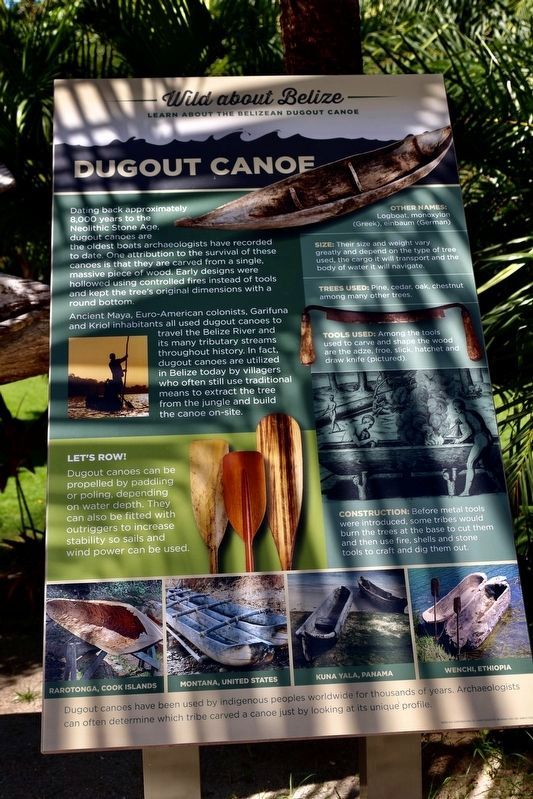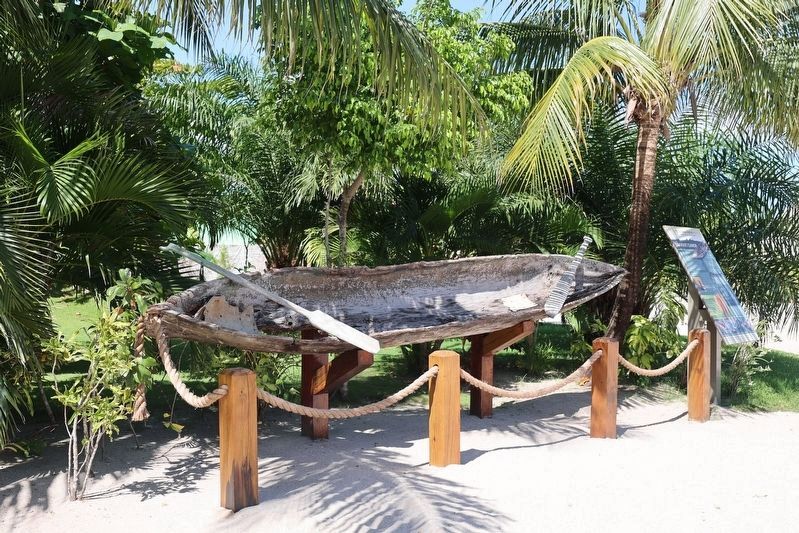Harvest Caye, Toledo, Belize — Central America
Dugout Canoe
Dugout Canoe
Dating back approximately 8,000 years to the Neolithic Stone Age, dugout canoes are the oldest boats archaeologists have recorded to date. One attribution to the survival of these canoes is that they are carved from a single, massive piece of wood. Early designs were hollowed using controlled fires instead of tools and kept the tree's original dimensions with a round bottom.
Ancient Maya, Euro-American colonists, Garifuna, and Kriol inhabitants all used dugout canoes to travel the Belize River and its many tributary streams throughout history. Dugout canoes are utilized in Belize today by villagers who often still use traditional means to extract the trees from the jungle and build the canoe on-site.
Lets Row!
Dugout canoes can be propelled by paddling or poling, depending on water depth. They can also be fitted with outriggers to increase stability so sails and wind power can be used.
Other Names: Logboat, monoxylon, (Greek), einbaum (Germany)
Size: Their size and weight vary greatly and depend on the type of tree used, the cargo it will transport, and the body of water it will navigate.
Tree Used: Pine, cedar, oak, chestnut among many other trees.
Tools Used: Among the tools used to carve and shape the wood are the adze, froe, stick, hatchet, and draw knife (pictured).
Construction : Before metal tools were introduced, some tribes would burn the trees at the base to cut them and then use fire, shell, and stone tools to craft and dig them out.
Caption
Rarotonga, Cook Islands · Montana, United States · Kuna Yala, Panama · Wenchi, Ethiopia
Dugout canoes have been used by indigenous people worldwide for thousands of years. Archaeologists can often determine which tribe carved a canoe just by looking at its unique profile.
Topics. This historical marker is listed in these topic lists: Native Americans • Waterways & Vessels.
Location. 16° 28.656′ N, 88° 24.283′ W. Marker is in Harvest Caye, Toledo. The marker is along the beach in the tree lines. Harvest Caye is a private island in Belize. Touch for map. Touch for directions.
Other nearby markers. At least 3 other markers are within walking distance of this marker. Black Howler Monkey (within shouting distance of this marker); Antillean Manatee (within shouting distance of this marker); Hawksbill Turtle (within shouting distance of this marker).
Also see . . . Old Belize is at Old Belize. The dugout canoe, or dory, is a remarkable symbol of the Garinagu, who found a new homeland in Belize. An epic exodus led the Garifuna people to the shores of Southern Belize more than two centuries ago, and we’ve been celebrating ever since! (Submitted on January 26, 2024, by Sandra Hughes Tidwell of Killen, Alabama, USA.)
Credits. This page was last revised on February 5, 2024. It was originally submitted on January 26, 2024, by Sandra Hughes Tidwell of Killen, Alabama, USA. This page has been viewed 64 times since then. Photos: 1, 2. submitted on January 26, 2024, by Sandra Hughes Tidwell of Killen, Alabama, USA. • J. Makali Bruton was the editor who published this page.

